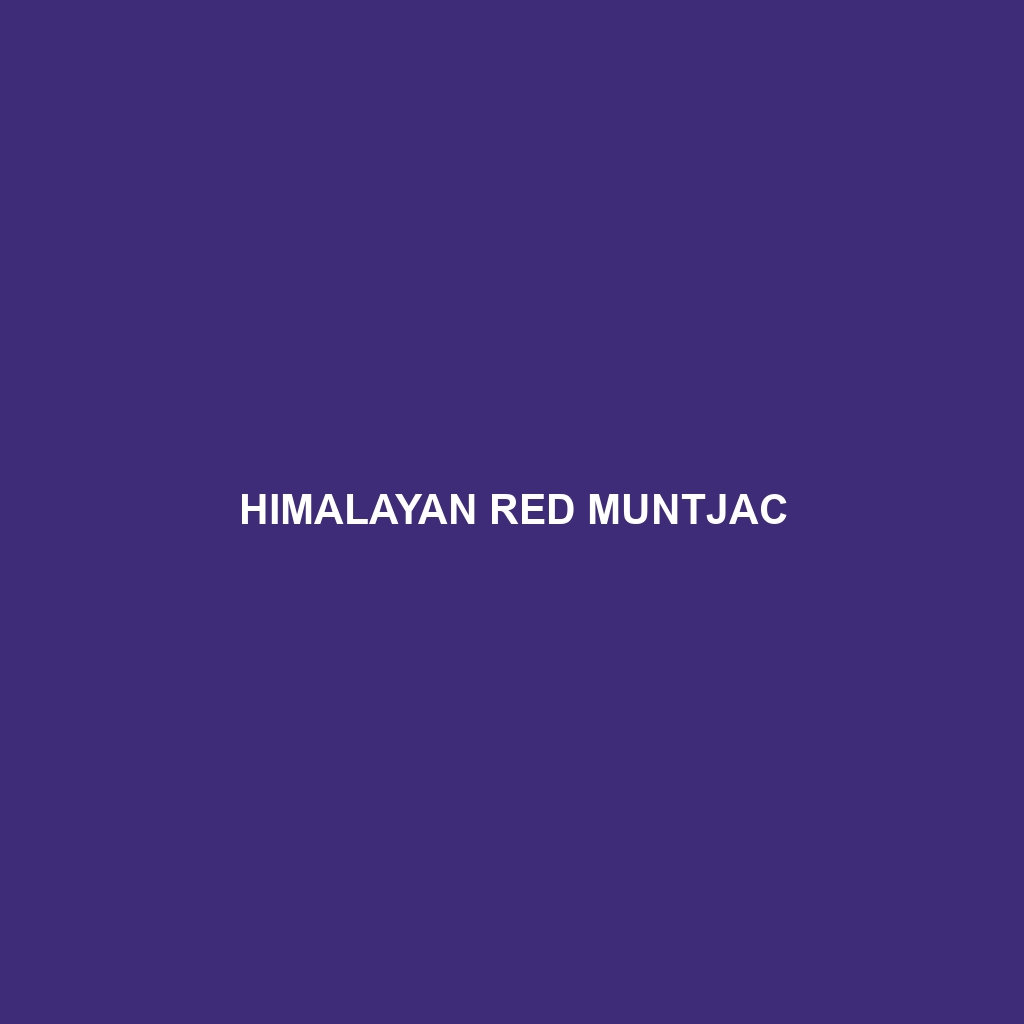Bornean Yellow Muntjac
Common Name: Bornean Yellow Muntjac
Scientific Name: Muntiacus atherodes
Habitat
The Bornean Yellow Muntjac is primarily found in the lush rainforests of Borneo, particularly within the lowland forests and hilly regions. This elusive species prefers dense underbrush and is commonly seen in remote areas of Malaysia and Indonesia, thriving in environments rich in tropical vegetation and moisture.
Physical Characteristics
The Bornean Yellow Muntjac is a small deer, typically ranging from 80 to 100 centimeters in length. They display a striking yellowish-brown coat, which assists them in camouflage within their forested habitat. This species features distinctive long, slender legs, and males possess small antlers, which can be used in battles for dominance. The ears are large and rounded, enhancing their hearing capabilities, which is essential for survival in dense forests.
Behavior
Bornean Yellow Muntjacs are primarily solitary or seen in small family groups. They are crepuscular, meaning they are most active during dawn and dusk. This species exhibits a unique vocalization that resembles barking, which is often used to communicate with others. Their shy nature makes them elusive, and they rely heavily on their acute senses to evade predators.
Diet
The diet of the Bornean Yellow Muntjac consists mainly of leaves, fruits, and young shoots. They are herbivores known for their selective feeding habits, which include browsing on various types of vegetation. Their feeding patterns can impact plant growth and seed dispersion in their habitat, emphasizing their role as a crucial part of the ecosystem.
Reproduction
The breeding season for the Bornean Yellow Muntjac typically occurs throughout the year, with peak times influenced by environmental factors. Female muntjacs generally give birth to a single fawn after a gestation period of approximately 7 months. Offspring are precocial, meaning they can stand and run shortly after birth, which is vital for their survival in predator-rich environments. Maternal care is extended to the young until they are capable of foraging independently.
Conservation Status
Currently, the Bornean Yellow Muntjac is classified as vulnerable due to habitat loss and poaching threats. Deforestation for agriculture and logging has significantly reduced their population and natural habitat. Conservation efforts are essential to protect this species from further decline and ensure its survival.
Interesting Facts
One fascinating aspect of the Bornean Yellow Muntjac is its ability to produce a wide range of vocal sounds, which are used for communication and warning calls. Additionally, they have been observed using their antlers to scrape the ground in search of food, showcasing their intelligence and adaptability in the wild.
Role in Ecosystem
The Bornean Yellow Muntjac plays a vital role in its ecosystem as a herbivore. By feeding on plants and fruits, it helps control vegetation growth and facilitates seed dispersal, which contributes to forest regeneration. Their presence in the food chain also provides sustenance for larger predators, thereby maintaining a balanced ecosystem.
